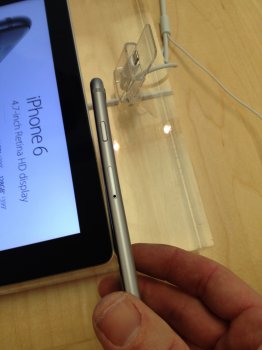The Samsung devices when in adaptive display have very exaggerated saturated colours and in this mode there is a vibrancy difference, however as soon as you turn on the 'RGB accurate' Basic mode in display settings the difference between them is negligible both colour wise and accuracy of whites.
Whether you prefer over saturated mode or the more accurate RGB is subjective, personally I go for colour accuracy all the time (I'm a graphic designer, I stare at 100% SRGB & Adobe RGB calibrated screens).
So whilst I can understand people preferring the vibrancy / colour pop modes - that doesn't mean by any stretch the Apple iPhone displays are poor. They are likely the best LCD panels on a smart phone and stick close to the SRGB calibration than over saturating colours.
I honestly can not see the pixels on my 6S+ or my S7e. I am routinely working on 300 dpi material for the printers every day of the week. So 400+ ppi on my devices, I'm happy out.
I wouldn't say no to the iPhone 7 going to 2k especially if it does go Amoled. But at the same time I suspect Apple will still calibrate it's screens more akin to Samsungs (SRGB accurate) Basic mode as they do tend to favor colour accuracy over vibrancy. And if they do people will still complain because a lot of consumers perceive high saturation as better. Plus people complain on the Internet regardless of whatever any company puts out.
If they do go 2k on iphone 7+, I hope it's not at the expense of battery. We already know it's meant to be a thinner device this year (whereas Samsung took the wise move and went fractionally thicker for more battery), in which case if I had to choose battery life over 2k, I would choose battery. It's one of the current 6s+'s greatest strengths.



 The battery life is way better than the hires variant though (xps 13)
The battery life is way better than the hires variant though (xps 13)
